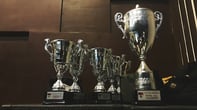Published on
Doing, Being, and the Integrative Liberal Arts

In Booth Tarkington’s 1918 novel The Magnificent Ambersons, a university student of aristocratic birth distills the purpose of higher education through the rhetorical question: “…[D]on’t you think being things is ‘rahthuh bettah’ than doing things?”
The quote underscores the growing tension that had existed between professional training and liberal arts education at the turn of the 20th century. This tension was further emphasized at mid-century in C.P. Snow’s 1959 essay The Two Cultures and the Scientific Revolution, and has exhibited a long shelf-life as illustrated through current presidential hopeful Senator Marco Rubio’s polemic that the US needs “more welders and less [sic] philosophers.”
But framing the issue as one of “either/or”—between “doing” or “being” —overlooks the realities of our 21st century society. In fact, it is the integration of liberal education and professional education that will allow students (and our economy, our communities and our democracy) to thrive. Walter Isaacson illustrates this point in his 2014 book The Innovators, which argues that the innovators and “makers” of our current digital age are not one-dimensional. They are people who ably “marry” (to use Steve Jobs’ term) technical skills with the humanities, the social sciences and the arts.
A large and growing literature reinforces what many of us in higher education know already: the liberal arts encourage critical thinking, communication, problem solving, ethical decision-making, creativity and appreciation for the global and social context in which we live and work—all elements that employers have identified as especially important in the workplace. The liberal arts empower students and help them develop a sense of personal, civic and social responsibility. These characteristics of the liberal arts are “professional” by definition in that every professional context requires acuity in these areas. Combined with technical training, these skills enable students to achieve success in increasingly dynamic personal and professional lives.
My institution is focused on career-oriented education. But by this we don’t mean vocational (or even professional) education, despite the fact that our university produces some of the largest graduating classes of engineering, computing and information science students in the country. We recognize that the notion of a “career” is shifting apace with new digital and information technologies, and it is not enough for us only to prime students for their first job. Our notion of a “career-oriented education” is one that equips students to be critical thinkers and problem solvers; expert communicators and collaborators; ethical and team-oriented decision makers. Indeed, in the 21st century a career-oriented education requires exposure to multiple disciplines (ways of thinking) and the integration of these disciplines.
So, how do we integrate? How do we bring together disciplines, for example, as seemingly disparate as software engineering and philosophy? Extending that example, how do we encourage both the nascent software engineer to think a little like the philosopher, and the fledgling philosopher to think a little like a software engineer?
At RIT we are focusing on four essential areas to support this integrative teaching and learning:
- Developing interdisciplinary, applied liberal arts curricula that is embedded in the curricula of other (technical and professional) disciplines;
- Offering students opportunities to participate in interdisciplinary, team-based, problem solving with faculty guidance;
- Creating spaces and events that physically bring together faculty and students from different disciplines to cross-pollinate ideas and build community (what we call “intellectual collisions”); and,
- Hiring, supporting and tenuring faculty who are actively engaged in interdisciplinary scholarship and teaching.
Success for such initiatives, admittedly, is difficult to measure. We can’t simply rely on metrics aligned with the philosophy that higher education is only about getting a first job. Certainly some level of student success can be assessed by measures such as job placement or salary levels for recent graduates. But we need to determine ways to assess student success more holistically: Does the graduate know what citizenship means, and does he or she embrace the related responsibilities in a democratic society? Is the graduate an agile professional with the ability to communicate, think critically, solve problems collectively, and understand issues in their social and humanistic contexts? Do our graduates appreciate their role in the larger world with an understanding of diverse perspectives, cultures, and ethical norms and how all these are affected by the advancement of new technologies?
An increasing number of colleges and universities are focused on these types of questions and are making major inroads on merging professional education and the liberal arts. That work needs to be shared, discussed, and implemented more widely across higher education. Those institutions who are able to bring together both the “doing” and the “being” will find ultimate success, and that success will validate the importance of integrated liberal education in building successful businesses, non-profits and communities.
Author Perspective: Administrator



